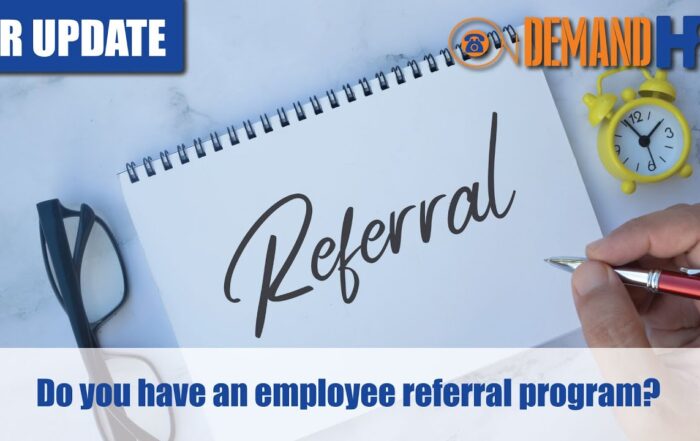Small Business Employee Termination: Steps to Protect Your Business
As a small business owner, terminating an employee can be one of the most difficult decisions you face. However, it’s crucial to approach this process with care and precision to protect your business from costly legal challenges. In this article, we’ll outline the necessary steps to ensure a fair and legally sound termination process, helping you avoid the common mistakes that can lead to unfair dismissal claims.
Facing a HR or WR Challenge and need a Free Strategic Action Plan?
Want to access our free online training courses to build your skills?
Share the HR or workplace relations challenge facing your business and one of our experienced consultants will be in touch within 24 hours with a strategic action plan or discover the best strategy yourself by accessing out free online training library.
Understanding the Fair Work Act and Small Business Fair Dismissal Code
Before diving into the termination process, it’s important to understand the legal framework that governs employee dismissals in Australia. The Fair Work Act provides clear guidelines on how dismissals should be handled, and if your business has fewer than 15 employees, you’re classified as a small business. This classification offers additional protections under the Small Business Fair Dismissal Code.
The Small Business Fair Dismissal Code is designed to help small businesses ensure that any dismissal is fair and lawful. It outlines specific steps that must be followed to avoid claims of unfair dismissal. However, having these protections doesn’t mean you can bypass essential procedures like investigating the reasons for termination or substantiating claims against the employee.
Step 1: Clarify Intentions and Communicate Clearly
The first step in protecting your business during an employee termination is to ensure clear communication. Misunderstandings can easily arise, particularly in tense situations. If an employee makes a statement that suggests they’re quitting or are unhappy, it’s important to clarify their intentions before taking any further action.
For example, if an employee storms out after a heated disagreement, as in the case of the warehouse assistant and truck driver, don’t immediately assume they have resigned. Take the time to speak with the employee and confirm their intentions. This simple step can prevent costly misunderstandings and potential legal challenges.
Step 2: Conduct a Thorough Investigation
Once you’ve clarified the employee’s intentions, the next step is to conduct a thorough investigation into the circumstances leading to the potential termination. This involves gathering all relevant information, including the perspectives of all parties involved.
In the aforementioned case study, the employer relied solely on a senior colleague’s account of the incident, leading to a termination that was later deemed unfair by the Fair Work Commission. The Commission emphasized that the employer should have taken reasonable steps to clarify the situation and gather more information before making the decision to terminate.
By conducting a comprehensive investigation, you ensure that you have all the facts before making a decision. This not only strengthens your position should the termination be challenged but also demonstrates that you have acted fairly and reasonably.
Step 3: Follow the Small Business Fair Dismissal Code
Even if your investigation supports the decision to terminate, it’s crucial to follow the Small Business Fair Dismissal Code to the letter. This code provides a checklist of steps that must be followed to ensure the dismissal is fair and legally sound.
The code requires that you provide the employee with a valid reason for their termination, give them an opportunity to respond, and document all aspects of the process. Adhering to these steps not only helps to protect your business from unfair dismissal claims but also reinforces the fairness of your decision.
Step 4: Document Everything
Documentation is a critical aspect of protecting your business during employee terminations. Keep detailed records of all communications, meetings, and decisions related to the termination. This includes notes from any investigations, copies of correspondence with the employee, and records of any warnings or disciplinary actions that were taken prior to the termination.
Having thorough documentation can be invaluable if the termination is later challenged. It provides a clear record of the steps you took to ensure the process was fair and in accordance with the law, which can be critical in defending your actions before the Fair Work Commission.
Business Outcomes & Key Insights
By following these steps, small business owners can significantly reduce the risk of facing unfair dismissal claims and other legal challenges related to employee terminations. The key to protecting your business lies in clear communication, thorough investigation, adherence to legal processes, and meticulous documentation.
- Clarify Intentions: Always confirm the employee’s intentions before making any decisions based on their actions or statements.
- Conduct Thorough Investigations: Ensure you gather all relevant facts and perspectives before proceeding with a termination.
- Follow Legal Guidelines: Adhere strictly to the Small Business Fair Dismissal Code to ensure the termination is fair and lawful.
- Document Everything: Keep detailed records of the entire process to protect your business in the event of a legal challenge.
Remember, the goal is not just to terminate an employee but to do so in a way that is fair, legal, and protects your business from potential risks. By taking these steps, you can ensure that your small business remains compliant with the law while maintaining a fair and respectful workplace.
Recent Posts
Do you have an employee referral program?
Andrew Koleda2023-07-23T10:50:55+10:00Recruitment|
Superannuation Changes July 2022
Andrew Koleda2023-07-23T10:51:04+10:00HR Guides|
Award Coverage & FWO Enforcement
Andrew Koleda2023-07-23T10:51:14+10:00HR Guides|
Minimum Wage Increase 2022
Andrew Koleda2023-07-23T10:51:23+10:00HR Guides|
HR Roundup – May 2022
Andrew Koleda2023-07-23T10:51:33+10:00HR Roundups|
Annual and Sick Leave for Casual Employees?
Andrew Koleda2023-07-23T10:51:42+10:00HR Guides|






